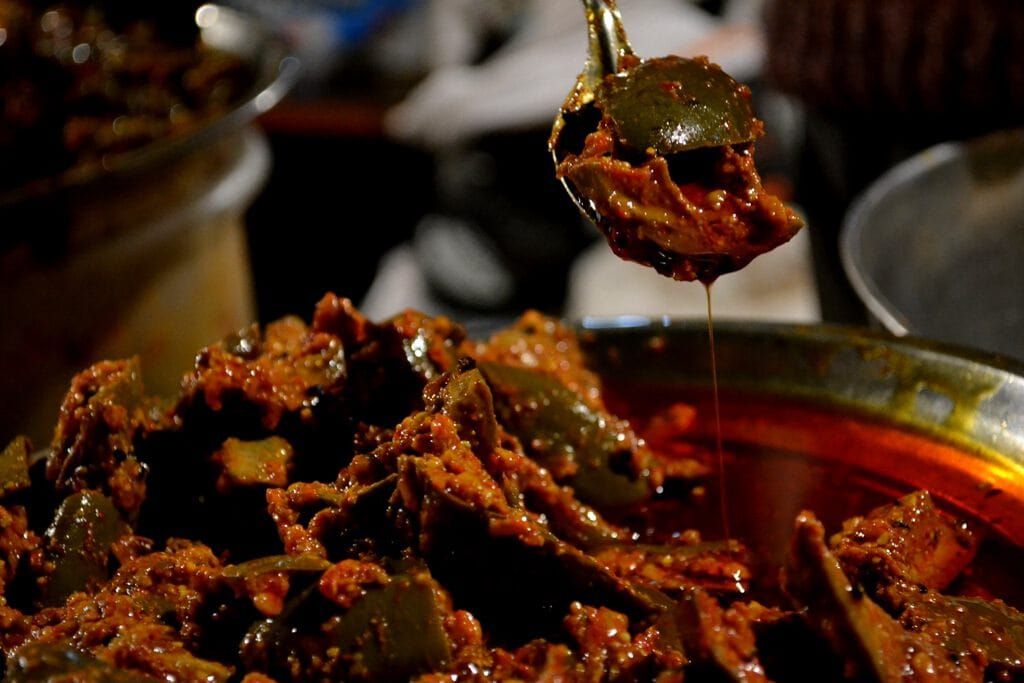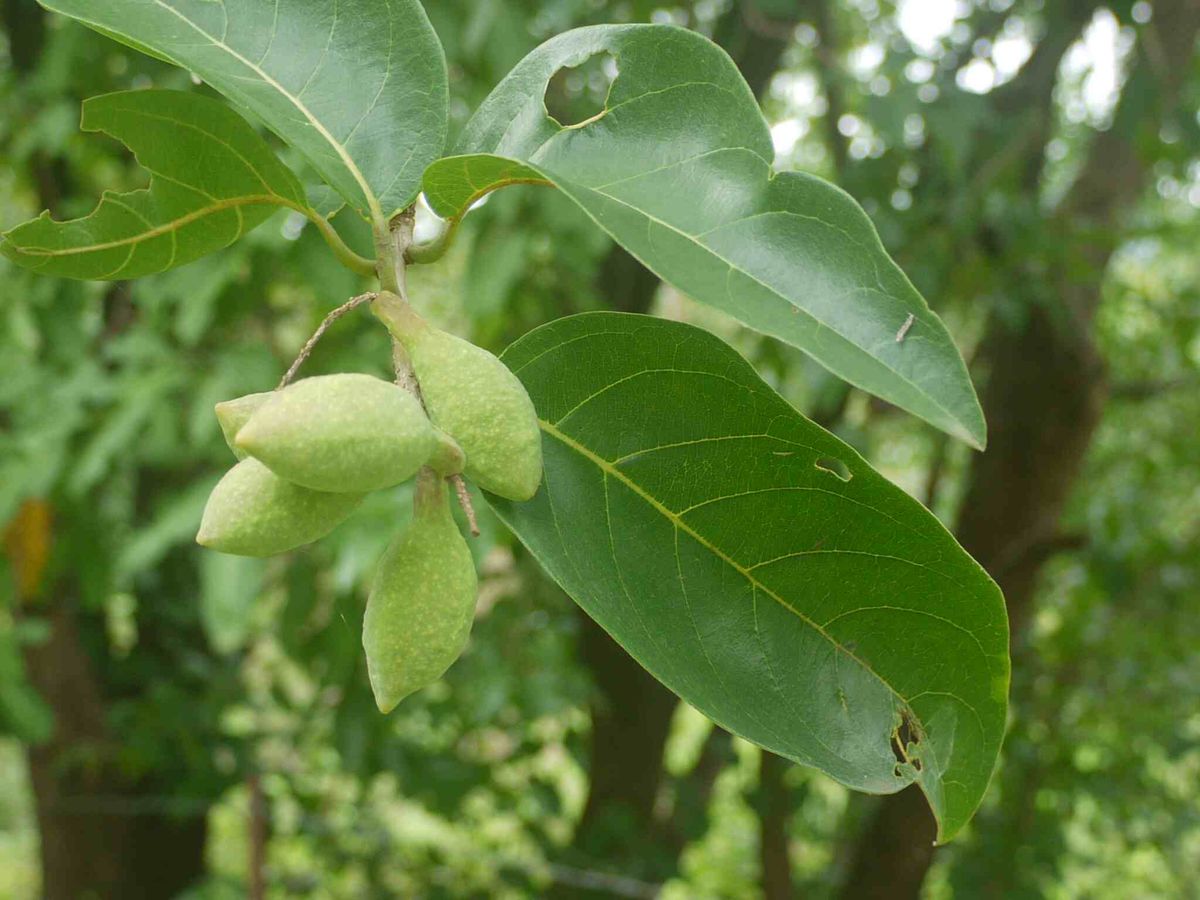Many people don’t know that inknut is used in pickles. Ask your nani, dadi or even your aunty who sends you a bottle of fresh pickle every summer, and they’ll give you the same story that take mango, red chilli powder, haldi, salt and mustard oil, then keeps it in the sun for two weeks, and that’s it!
But we all know that’s not it.
Because that final taste, that punch, that depth is never easy to copy. It is almost like there is something hidden inside the recipe, something that nobody talks about. And that’s a proper secret ingredient called Inknut.
What is Inknut?
You may not have heard the name Inknut, but your grandparents probably know it by other names like Haritaki, Harad, Kadukkai or the ayurvedic name triphala. It looks small and wrinkled in appearance, and not that attractive, but it’s full of health benefits.
In Ayurveda, this is used to help digestion, boost immunity, clear the stomach and improve memory. But what many people don’t know is that in traditional pickles, especially in the south and tribal areas, inknut is also used as a hidden spice.

Why is Inknut added to Pickle?
Inknut is not added just as an ingredient, but it has its real value.
1. It works like a real preservative
In olden days, there was no fridge to preserve things from spoiling, and people had to make pickles that would stay good for months, sometimes years. Inknut has antibacterial and antifungal properties. It keeps the pickle safe from spoiling and helps it to stay fresh for longer.
2. It helps your stomach
As we know, Indian pickles are oily, tangy and sometimes hard to digest. Adding Inknut to it balances out. It makes digestion easier and prevents bloating and gas. So, Dadi knew what she was adding.
3. Adds a Unique Taste
Inknut does not give a strong flavour like garlic or hing. It adds a mild flavour like a subtle music in the background. You won’t notice it directly, but without it, you will feel something’s missing. It adds a rich and earthy taste that goes well with other masalas.
Uses of Inknut other than Pickles
Inknut is not only used in food. It’s been around us for centuries in our culture.
- Ayurveda: This is a big deal, as it is known to clean the stomach and also improve skin and memory.
- Ink Making: This is where the name “Ink-nut” came from. In olden times, people used this fruit to make ink for writing.
- Hair Care: When Inknut is mixed with amla and shikakai, it is great for hair washes for growth.
So, this tiny fruit has been hiding giving plain sight. It was part of our history, but slowly forgotten.

Should Brands Bring Back Inknut?
Now, just imagine how it will sound if pickle brands start adding “Made with Inknut” on their labels? It sounds fancy, right?
Nowadays, people are looking for authentic, traditional and healthy food. We can already see moringa, turmeric and ghee going trendy. So, maybe it’s time Inknut should get its spotlight. It could become the next super spice, used not just for health but for its uniqueness and culture.
But here’s the point to note. We shouldn’t ruin it with hype. Inknut is special because it is rare and simple. If brands do bring it back, they should do it with honesty, not just for marketing purposes.
How to try it at Home?
I hope you have understood the use of Inknut, and let’s see some of the simple ways to use it:
- In Pickles – Dry roast inknut, crush it and add just a pinch to the masala of the pickle. Try it with mango or amla pickle.
- As a tonic, soak one or two pieces overnight in warm water in the morning, it is great for digestion.
- Hair wash powder – Mix it with amla and shikakai for a natural shampoo.
- Mouth Freshener – Chew a small piece after meals, it helps cleanse the mouth and boost digestion.
But remember, Inknut is strong. Use it in small amounts, and check if it suits your body.
Final Thoughts
In today’s fast world, we keep running after what is trending. But sometimes, the real magic lies in the old spices like Inknut in a pickle.
It’s not heavy, it’s not subtle, but it does its job perfectly, holding everything together quietly. So next time you eat a spicy pickle with rice or roti, just pause and think what could make a great twist.





0 Comments